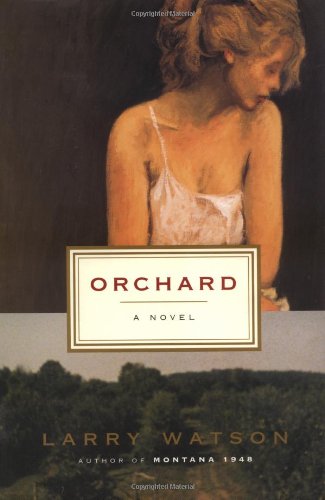Orchard
Set in 1953, Larry Watson’s Orchard depicts the newly altered lives of Henry and Sonja House. The sudden death of their young son and Henry’s subsequent incapacitating accident make Sonja feel she must find the family a source of income in addition to their apple orchard. Without telling her husband, she accepts an offer from artist Ned Weaver to be his model. Weaver has his own problems. An acclaimed and temperamental painter, he prizes his art above all. His associations with models inevitably lead to passionate liaisons, something his wife Harriet usually grudgingly tolerates. The four characters share the unenviable fellowship of being unfulfilled and the regret of things left undone.
Early in the book Weaver says, “…everything I draw or paint has its own story. A past. A future. Never only the moment on the canvas.” This is also true of the author’s work. Orchard is artfully rendered. Composed with an overall symmetry, sections in the book are canvases themselves, illustrating past, present and future. But the novel lacks a sense of its own place in the past; except for numerous references to calendar dates, the story feels like a contemporary one in a rural setting.










